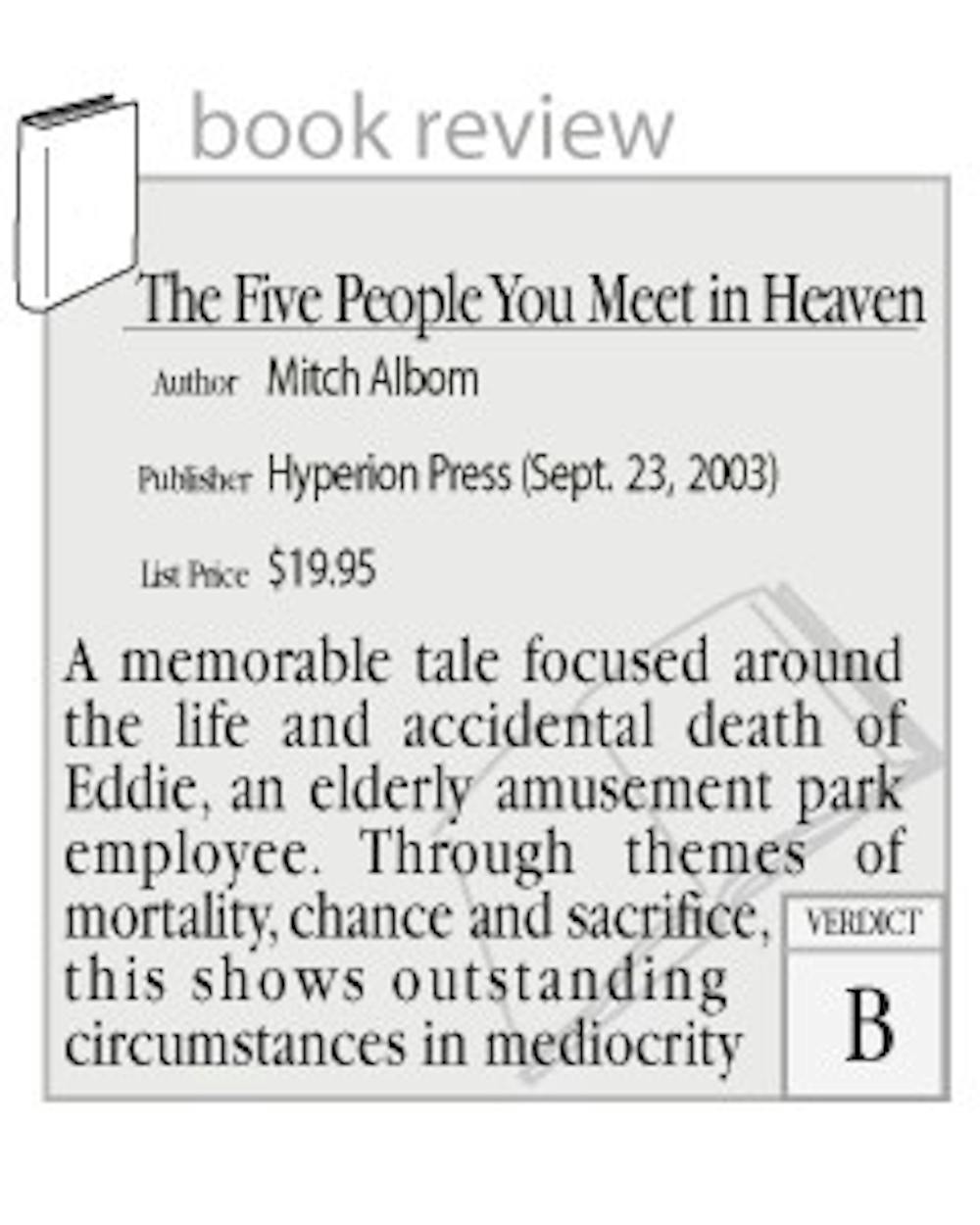Visions of the afterlife combined with the evolution of society may sound like the premise for a fantasy novel, but "Five People You Meet in Heaven," Mitch Albom's follow-up to "Tuesdays with Morrie," takes a more philosophical and sentimental tone regarding these existential themes.
"The Five People You Meet in Heaven" is a tale focused around the life and accidental death of Eddie, an elderly amusement park employee. By centering the novel on one character, Albom is able to weave themes of mortality, chance and sacrifice into a tale of outstanding circumstances in mediocrity.
Ruby Pier, the amusement park in the book, has seen many waves of people, many changes in society, and serves as an ironic backdrop to the account of what happens after Eddie dies. It also provides a paradoxical background to a tale of mortality.
The premise of the novel is that five people will meet you after you die, and will teach you five different lessons from their own versions of heaven before you can finally move on to your own vision of the afterlife.
Albom keeps the novel suspenseful, with Eddie's tragic accident sealing the reader into a vast web of interrelated vignettes surrounding the existence of a seemingly inconsequential person.
"The Five People You Meet in Heaven" offers a possible solution to the question pondered by many religious groups, individuals facing their own mortality or those confronted with the passing of a loved one. The book also makes an attempt to be motivational, but the most resounding element is awareness of our own mortality.
The strongest points of "The Five People You Meet in Heaven" revolve around parenting, old age, war and eternal love. Another well-written aspect is the social commentary brought on by the evolution of Ruby Pier, from its glory, to the time of "freak shows," to the Great Depression, and to the present with fast rides and the dangers of inattentive parents.
The novel flows well, and its easy readability is among the book's strong points, with the exception of awkwardly placed scenes from Eddie's childhood and spotty information about more important plot elements.
Some of the novel's weak points include the inconsistency of Albom's explanation of death. The author sometimes offers satisfactory explanations of the afterlife, while other times he makes the idea seem too simple. Themes of disappointment, childrearing and chance are underdeveloped, while the relation of Eddie's birthday to disappointments in his life is overdeveloped.
The vignettes also explain the role that Eddie played in each person's life, death or general existence, which also adds an interesting theme to the novel - how much those we meet in life were affected by our actions.
Albom succeeds in proposing answer to this idea, but fails in part due to the somewhat sloppy execution of his explanation. The series of vignettes associated with Eddie's death are inconsistent in poignancy, direction and content, and the connection to the 83-year-old Eddie and the plot itself occasionally feels weak.
Albom's dreamlike descriptions of the physical characteristics of each character's version of heaven and grazing over the larger events within the storyline is appropriate for this context, but may frustrate some readers into flipping past the painstaking detail.
Overall, the book feels trite, but it is easily accessible and the smart commentary elevates its quality at certain points. "Five People You Meet in Heaven" is also sprinkled with one-liners and sentiments that prove to be most memorable after reading.





